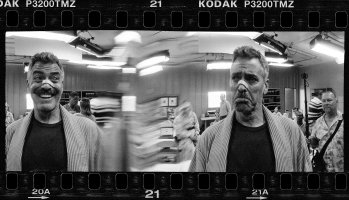Four 1/2-pixel moves would be the minimum to keep the same 3:2 aspect ratio. Canon has chosen nine 1/3-pixel moves for a higher MP output.
I’ve previously posted that I suspect even the 2x2 array, though it yields four times the MP, does not deliver four times the resolution. The reason is that gapless microlenses already collect light from the full spatial area projected into each pixel. Many years ago, my Zeiss cameras would capture 2x2 or 3x3 sub-pixel arrays with their 1.3 MP CCD sensors that did not have gapless microlenses, and where only about 1/3 of the pixel surface was photosensitive. That means the resulting 5 and 12 MP images were real resolution increases.
IMO, a 2x2 sub-pixel sampling array with a modern sensor will have a significant proportion of empty resolution, and Canon’s 3x3 sub-pixel sampling array will be mostly empty resolution.
I look forward to seeing some detailed testing.
Given the requirement for a static subject, I’d say no.

